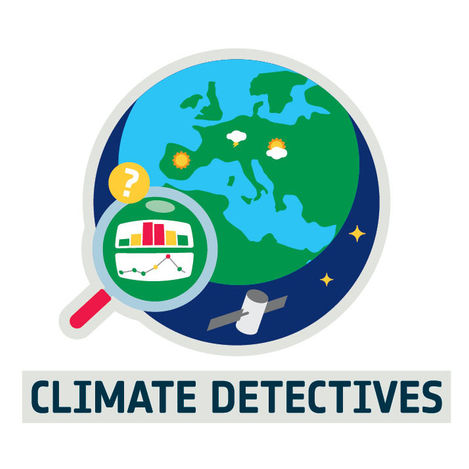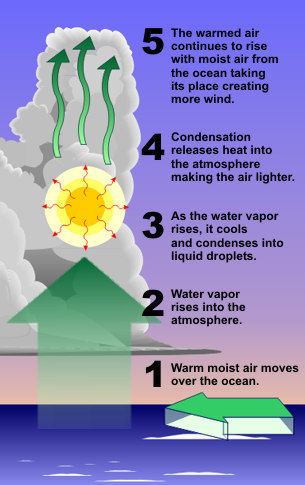
Scouts


Cyclones, storms, and hurricanes are terms often used to describe atmospheric disturbances, but they have distinct differences based on their nature, location, and intensity.
-
Storm: This is a broad term used to describe any disturbed state of the atmosphere, especially affecting its surface, and strongly implying severe weather. It can refer to any meteorological event marked by wind, rain, snow, or any combination of these. A storm can range from a thunderstorm with heavy rain and lightning to a snowstorm with intense snowfall. The term "storm" doesn't specify the strength of the disturbance beyond the implication of relatively bad weather.
-
Cyclone: This term has a more specific meaning and is defined by its circular or spiral motion. In meteorology, a cyclone is any area of low atmospheric pressure characterized by rotating wind movement. Cyclones rotate counterclockwise in the Northern Hemisphere and clockwise in the Southern Hemisphere. The term can refer to a wide range of systems, from small, short-lived low-pressure systems to large, intense weather systems like tropical cyclones. "Cyclone" is often used in a general sense outside the United States to describe what would be called hurricanes or typhoons in specific regions.
-
Hurricane: This is a type of tropical cyclone, a warm-core storm system with a well-defined center and numerous thunderstorms that produce strong winds and heavy rain. Hurricanes form over warm tropical or subtropical waters and draw their energy from the evaporation of seawater that is re-condensed into clouds and rain when moist air rises and cools to saturation. The term "hurricane" is used specifically for such storms in the Atlantic Ocean and the northeastern Pacific Ocean. The same kind of storm is called a typhoon in the northwestern Pacific Ocean and simply a cyclone in the South Pacific and Indian Ocean. For a tropical cyclone to be classified as a hurricane, it must have sustained winds of at least 74 miles per hour (119 kilometers per hour).
-
In summary, while "storm" is a general term for any disturbed state of the atmosphere, "cyclone" refers specifically to rotating weather systems, and "hurricane" denotes a powerful tropical cyclone in the Atlantic or northeastern Pacific oceans. The distinctions largely depend on the system's location, characteristics, and intensity.


What's a Medicane Tropical Cyclone?
A "Medicane" (a portmanteau of "Mediterranean" and "hurricane") is a term used to describe a weather phenomenon that resembles a tropical cyclone and occurs in the Mediterranean Sea. While not officially recognized in the meteorological community as a distinct class of cyclone, the term has gained popularity in the media and among some meteorologists to describe these rare events. Mediterraneans share several characteristics with tropical cyclones, including a symmetrical structure, a clear eye at times, and strong winds with heavy rainfall, but there are key differences stemming from the unique environmental conditions of the Mediterranean region.
Characteristics of Medicanes:
-
Formation: Medicanes develop over the Mediterranean Sea, often when warm sea surface temperatures combine with unstable atmospheric conditions. This sea is relatively small and surrounded by land, which influences the structure and development of these systems compared to their tropical counterparts.
-
Structure and Size: They can exhibit features similar to those of tropical cyclones, such as a well-defined center or eye, spiral rainbands, and strong winds. However, Medicanes are typically smaller in size.
-
Temperature Profile: Unlike tropical cyclones, which draw their energy from warm ocean waters and are considered "warm core" systems, Medicanes can develop in partially "cold core" conditions at their outset, transitioning to a warm core structure as they evolve.
-
Intensity and Impact: While Medicanes can reach wind speeds equivalent to those of hurricanes, they are generally less intense due to the Mediterranean's limited size and the sea's lower heat content. However, they can still cause significant damage, including flooding, strong winds, and rough seas.
-
Frequency and Season: Medicanes are relatively rare, with one or two occurring in a typical year, although not every year sees such a development. They can occur at various times of the year but are most common in the fall, when the sea temperatures are warmest.
-
Due to the unique characteristics and impacts of Medicanes, they are a subject of interest for European meteorologists and climate scientists. Studying these systems helps improve forecasting models and our understanding of how such cyclones can affect the Mediterranean region, particularly in the context of climate change and its potential to influence the frequency and intensity of these events.








